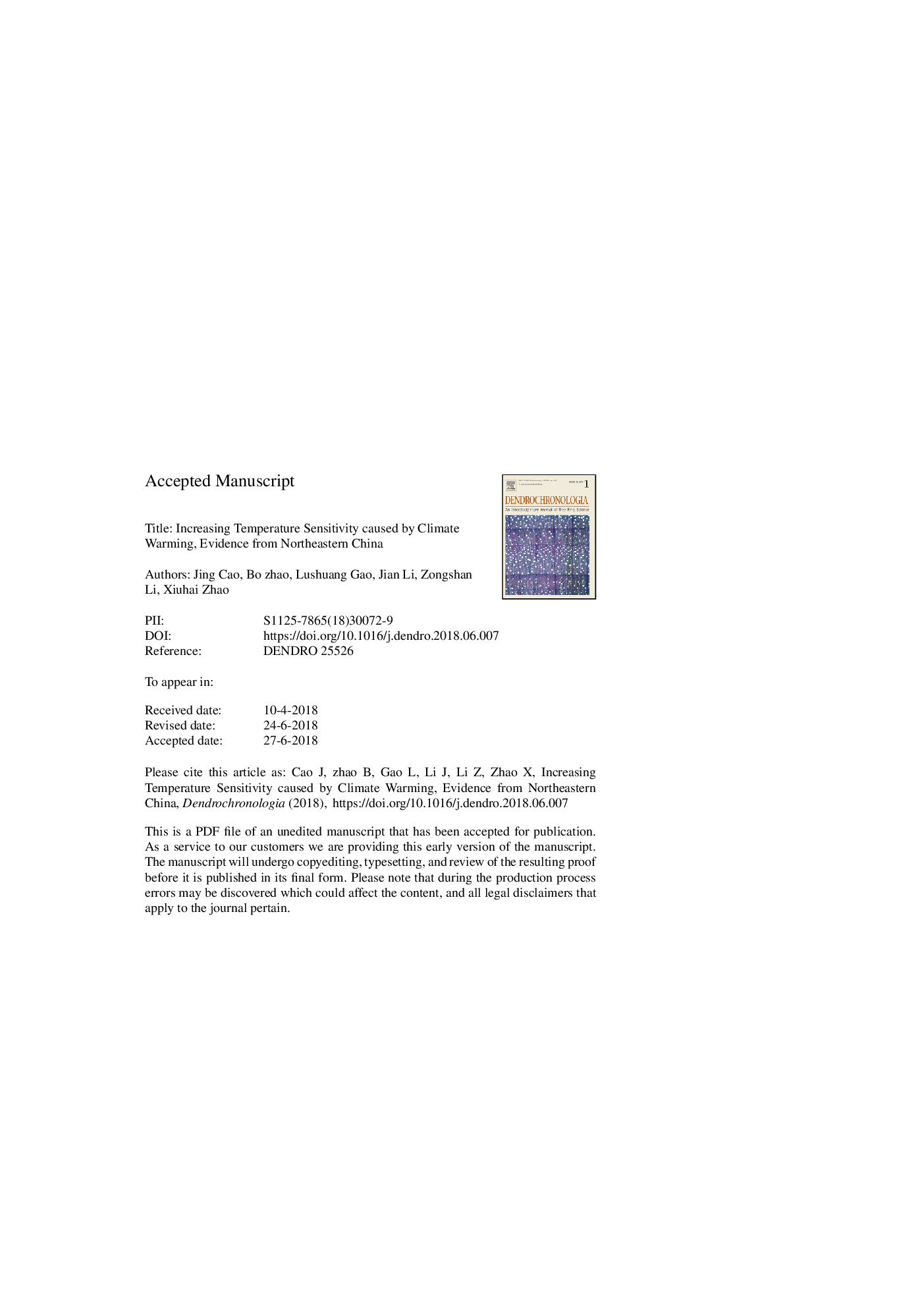| Article ID | Journal | Published Year | Pages | File Type |
|---|---|---|---|---|
| 9951702 | Dendrochronologia | 2018 | 30 Pages |
Abstract
The “Divergence Problem” in northern forests has been confirmed in a large number of empirical studies, especially in North America and Europe, climate warming having been identified as a cause for reduced sensitivity of recent tree-growth and increased tree mortality. However, according to other studies, tree growth patterns are keeping pace with climate warming. Covariation between rising temperatures and tree growth varies regionally. Therefore, extensive evidence is still needed across more geographic areas around the world. In the present study, we examined the sensitivity of Manchurian ash forest growth, which is one of the dominant species in the mixed coniferous and broad-leaved forests in the area around Changbai Mountain in Northeastern China. Five Manchurian ash tree-ring width chronologies were constructed from sites ranging along the elevational gradients of 750â¯m, 800â¯m, 900â¯m, 1000â¯m and 1100â¯m. We analyzed climate-growth relationships using Pearson correlation coefficients between ring-width indices and climate variables in two separate periods (before 1984 and after 1984), because instrumental temperature data have increased sharply after 1984. Along all of the elevational gradients, the sampled Manchurian ash forests show a higher growth rate and more sensitivity to climatic factors due to climate warming since the beginning of the 1984s. Comparatively, the forest growth at low elevation sites has increased faster than that at high elevation sites. If climate warming continues in northeastern China, further continuous and substantial increase in tree growth would substantially raise forest productivity in mixed coniferous and broad-leaved forests.
Keywords
Related Topics
Physical Sciences and Engineering
Earth and Planetary Sciences
Atmospheric Science
Authors
Jing Cao, Bo Zhao, Lushuang Gao, Jian Li, Zongshan Li, Xiuhai Zhao,
